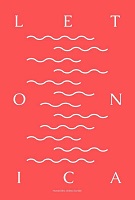Rīga Andreja Jonahsona dzīves un daiļrades kartē
Riga on Andrejs Johansons’ Map
Author(s): Inguna Daukste-SilasproģeSubject(s): Cultural history, Historical Geography, Latvian Literature
Published by: Latvijas Universitātes Literatūras, folkloras un mākslas institūts
Keywords: Andrejs Johansons; Riga; literary geography; mapping; memory space;
Summary/Abstract: This article focuses on the collections of essays Rīgas svārki mugurā (A Riga Jacket on My Back, 1966) and Visi Rīgas nami skan (Riga Houses Resound, 1970) by the cultural historian and scholar Andrejs Johansons (1922–1983), which were written during the author’s exile in Stockholm. On one hand, they involve a very personal (biographical) layer of memories, and on the other, they present an opportunity for the reader to view them in the context of collective memory, for they are a reflection of the memories of many Second World War refugees, focusing on their lost home. For Johansons, the feeling of belonging to a place is essential and is emphasized through the invocation of Riga in the titles of both books. Riga forms an intersection between memory and place (space and environment). The urban environment of Riga and its people, the events and sensations experienced have formed, impacted, and stimulated the personality of the author, also fostering his interest in Riga’s cultural history. Johansons’ works urge the reader to look at these texts from a new angle and to analyse them with the help of digital tools available in the 21st century to give shape to the space of Riga as seen by the author involving several layers of time: historical, cultural, and personal. In both books, Johansons lets the reader visualise the places where he had lived, walked, and studied as if plotting them on a map and supplementing them with a broader context. At the same time, the memories of Riga represent the author’s youth and the unfulfilled longing and lost paradise of a wise and academically educated individual. Johansons’ Riga and its changing times are something more than memories. His books allow the reader to feel and even visualize Riga from the late 1920s to the early 1940s.
Journal: Letonica
- Issue Year: 2020
- Issue No: 42
- Page Range: 50-65
- Page Count: 16
- Language: Latvian

